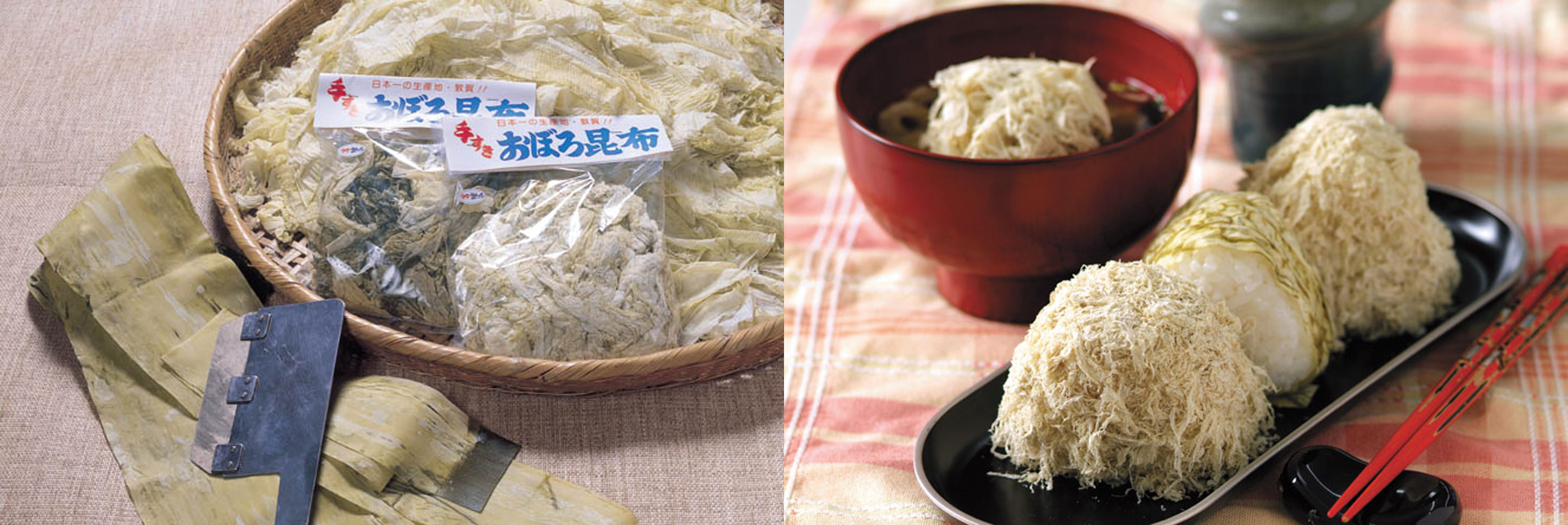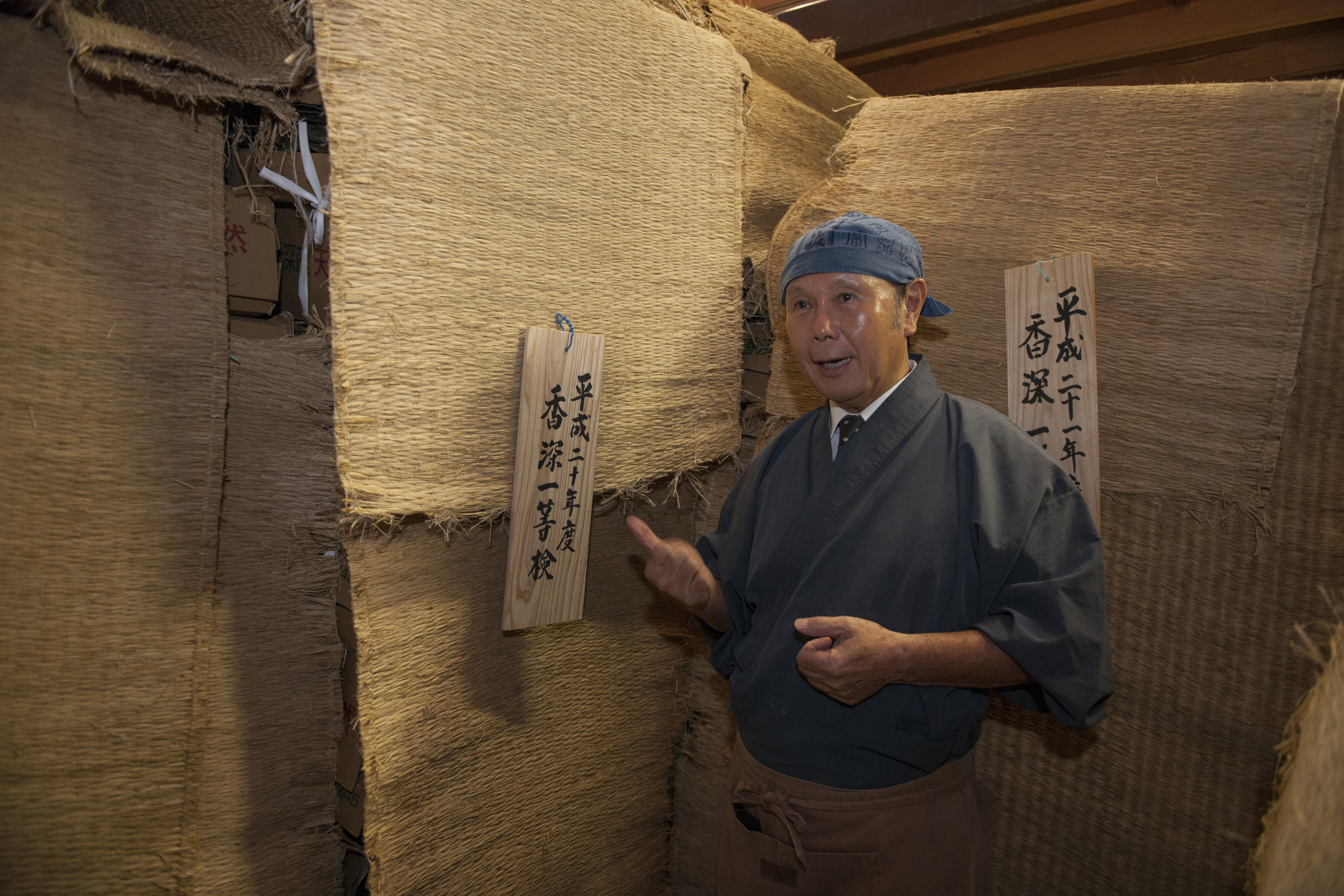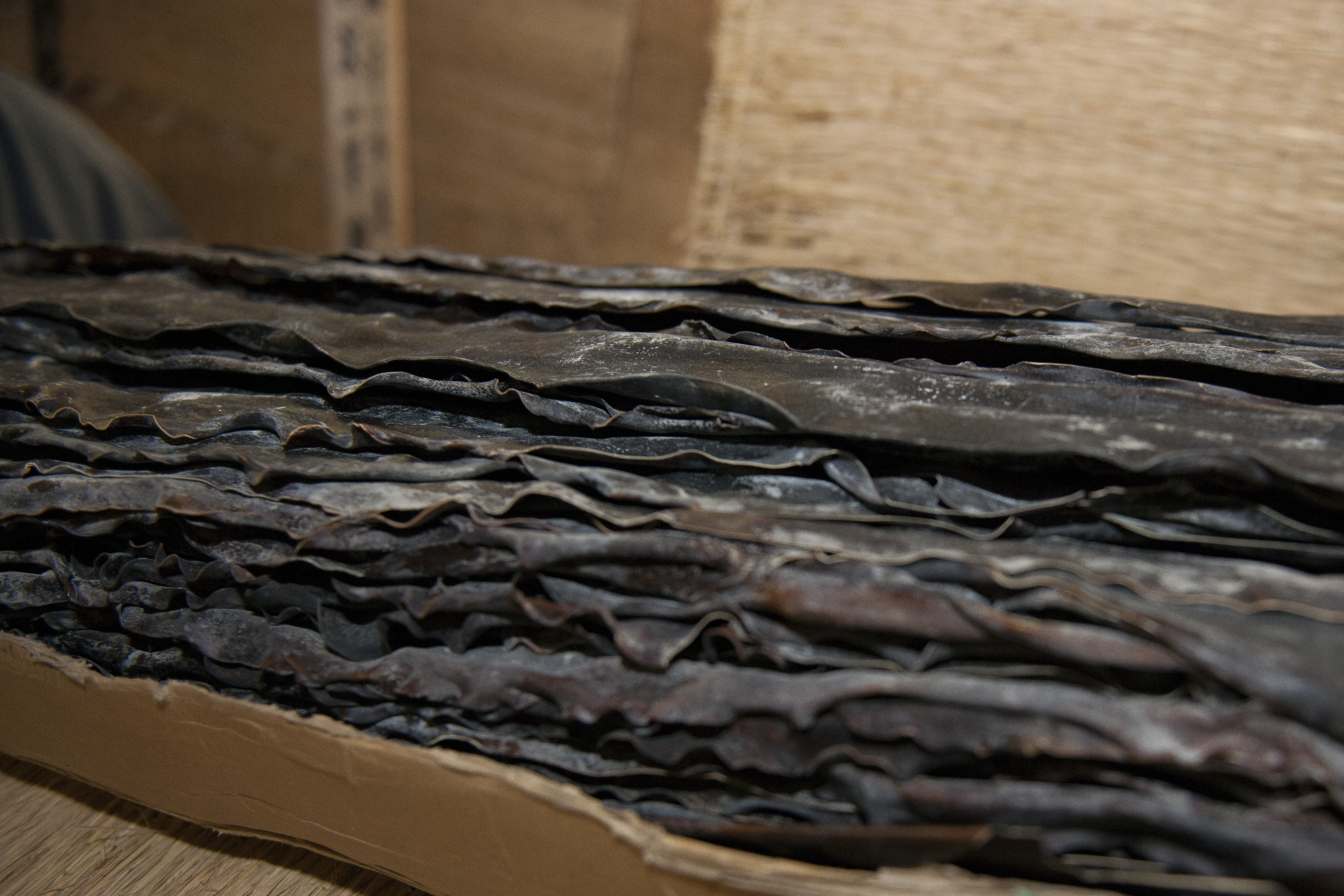TRAVELOGUE Fukui
“The Proud Traditional Food Culture of Japan’s “Best” Prefecture”
- text : Kosuke Miyata
- photo : Koki Nishimura
- edit : Seiji Takeuchi (nano.associates)
chapter 4
Dashi: a Japanese Flavour Aesthetic
Konbu kingdom, Tsuruga
If there is an ultimate factor contributing to excellent or poor tastes, then it is dashi (Japanese soup stock) which gives the base flavour to everything it’s used for. The dashi traditions vary between the western and eastern Japan. East Japan uses katsuo-bushi (dried bonito) as the main ingredient for extracting dashi, whereas for West Japan it’s konbu (kelp). There was a long-established trade route between Fukui and Kyoto, the very centre of washoku (Japanese food culture). Konbu, which was collected off the coast of Hokkaido, was transported from Hokkaido to Fukui port via ship, then carried over to Kyoto by road.
There have been several key ports in Fukui’s history, but one that particularly flourished was Tsuruga port, which functioned as the base port of kitamae-bune, cargo ships that sailed the Japan Sea during the Edo period to handle logistics between Hokkaido and Fukui. There were many merchants who handled konbu, and even now there are as many as 40 konbu trading companies in the town, which only has a population of 60,000. Tsuruga really is a kingdom of konbu.
Buddhism, Source of the Taste of Japan
Mr Takashi Okui, CEO of the long standing konbu trading company Okui Kaiseido, emphasises the strong tie between konbu and Buddhist culture. “Back then, temples also functioned as communication hubs from where news and information spread across Japan. Eihei-ji temple, built in Fukui, was like having Rockefeller Center suddenly built in the middle of mountains. It’s only natural to think that Fukui had a unique culture derived from the setting before it flourished. Its uniqueness was preserved by its distance from Kyoto, the capital. People needed to go over several mountains to get to the region from Kyoto.” Okui Kaiseido’s konbu has been a purveyor to the Eihei-ji temple since the Meiji period.
Perfect Ingredients in Every Sense
Around the coasts of Japan, konbu is only around Hokkaido and northern Tohoku. It grows only where the current is slow and where sunlight penetrates the surface. Because of its elegant savory taste, konbu is deeply valued. In the past it was even accepted as a substitute for money when paying tax to the government. 10g of konbu once had an exchange value of 10g of gold.
Another reason it is prized is because it’s a “multi-friendly” ingredient: it is “Earth-friendly” since any part of it can be eaten or used for other purposes without waste; it is “Health-friendly” in China, where konbu was administered as a medicine during iodine shortakes. Full of flavor, it’s also low in calories. What can compete with this? You would be forgiven for considering konbu a perfect ingredient.
Mr. Okui elaborated on the history of konbu and Japanese. “It was a nameless seaweed found in the ocean by chance. Over the time, that seaweed became to sit at the center of palate of Japanese cuisine. It happened partially because Japan is a seafaring country, but with all those facts and stories, I cannot help but sense there the graciousness and the aesthetics of Japanese people.”
[offer, num=5]




